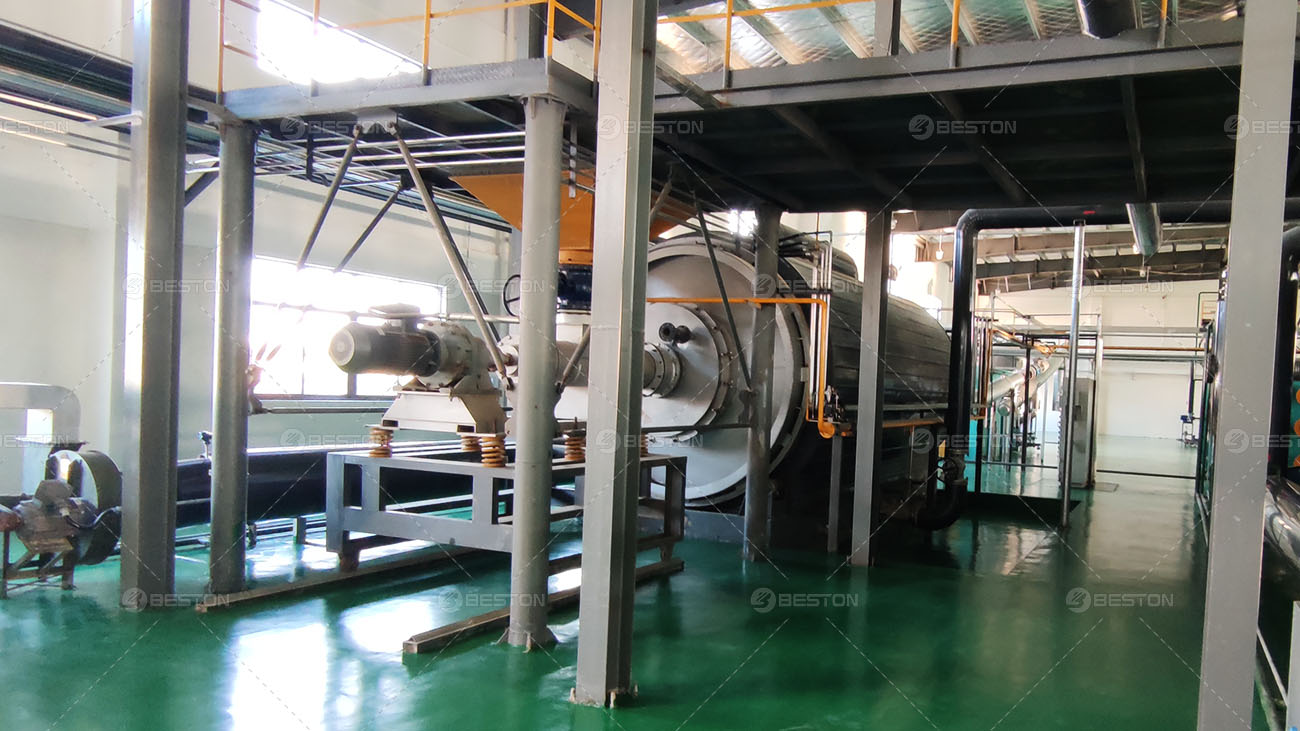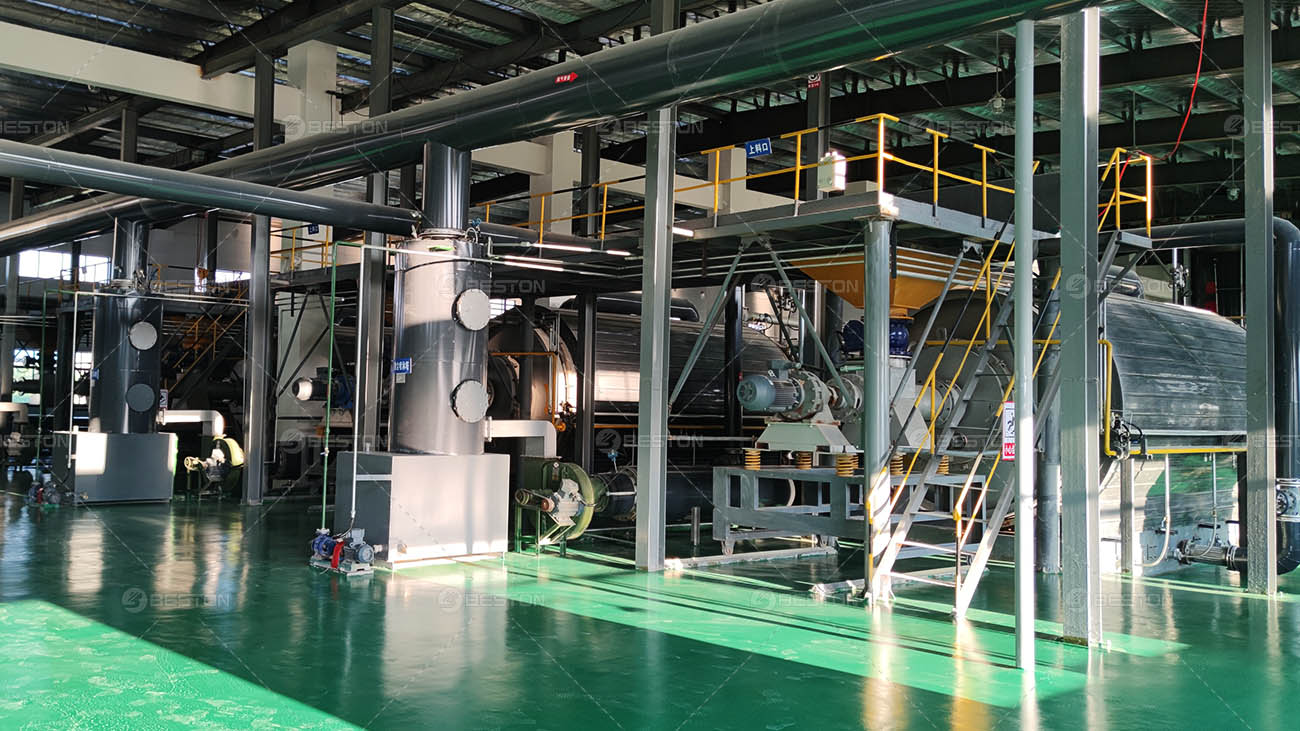Scrap tire disposal has become an increasingly challenging environmental issue worldwide. The accumulation of discarded tires not only consumes valuable land space but also poses severe environmental hazards, including the risk of fires and the release of toxic chemicals into the surroundings. However, in response to these pressing concerns, pyrolysis has emerged as a promising, innovative, and sustainable solution for managing scrap tires.

Introduction
The Challenge of Scrap Tire Disposal: The ubiquitous problem of scrap tire disposal poses a multifaceted challenge. Discarded tires, when left unattended, often accumulate in vast quantities, consuming substantial land resources and creating unsightly, hazardous tire piles. These piles not only blight the landscape but also pose environmental threats, as decomposing tires can release harmful substances into the soil and groundwater.
Pyrolysis as an Innovative Solution: In recent years, pyrolysis has gained prominence as a sustainable approach to address the scrap tire disposal predicament. This innovative process harnesses thermal decomposition to break down complex rubber compounds found in tires, transforming them into valuable products while mitigating the environmental impact.
Understanding Pyrolysis
Pyrolysis Process Overview
At its core, the pyrolysis process relies on thermal decomposition, a chemical reaction that occurs in the absence of oxygen. When applied to scrap tires, high temperatures induce the breakdown of the tire’s organic materials, resulting in the conversion of these materials into useful products.
Types of Pyrolysis Reactors
Pyrolysis reactors come in various configurations, each tailored to specific needs:
-
Batch Pyrolysis:
- Small pyrolysis machine involves processing a limited quantity of tires at a time. It’s a suitable choice for small-scale operations or research purposes where precise control is essential.
-
Semi-Continuous Pyrolysis:
- Semi-continuous pyrolysis strikes a balance between batch and continuous systems. It enables the continuous feeding of tires while allowing for intermittent reactor maintenance.
-
Fully Automatic Pyrolysis:
- Fully automatic pyrolysis systems are designed for large-scale, continuous tire processing. These systems offer enhanced efficiency and can operate around the clock.
Environmental Benefits
Reducing Landfill Waste
Mounting Tire Piles: The accumulation of discarded tires in landfills results in sprawling tire piles that mar the landscape and consume valuable land resources.
Environmental Hazards: As tires decompose over time, they can release toxic chemicals, posing risks to soil and groundwater quality.
Lowering Greenhouse Gas Emissions
Carbon-Neutral Approach: Pyrolysis machine offers a carbon-neutral approach to tire disposal. It captures and utilizes the carbon content in tires, preventing it from becoming a source of greenhouse gas emissions.
Emission Reduction Mechanisms: Advanced pyrolysis technologies incorporate emission control systems, further reducing the environmental impact by minimizing the release of harmful substances.

Resource Recovery and Product Yield
Recovered Carbon Black (rCB)
Properties and Applications: rCB obtained from pyrolysis exhibits properties similar to virgin carbon black and finds applications in industries such as rubber, plastics, and ink production.
Sustainable Alternatives: Using rCB from pyrolysis promotes sustainable practices by reducing reliance on non-renewable carbon black sources.
Pyrolysis Oil
Fuel Potential: Pyrolysis oil produced from tyre pyrolysis plant serves as a valuable fuel source or feedstock for further refining.
Industrial Applications: Industries like cement and steel production utilize pyrolysis oil to reduce their carbon footprint and enhance sustainability.
Synthesis Gas (Syngas)
Energy Generation: Syngas generated during pyrolysis can be used for electricity generation or as a feedstock for various chemical processes.
Chemical Industry: The chemical industry benefits from syngas as a versatile raw material for a wide range of chemical syntheses.
Technological Advancements
Continuous Pyrolysis Systems
Enhanced Efficiency: Continuous pyrolysis plants operate with improved efficiency, allowing for a continuous production stream, which can significantly boost productivity.
Scalability: These systems are highly scalable, catering to varying processing capacities, making them suitable for both small and large operations.
Catalyst-Assisted Pyrolysis
Improved Product Quality: Catalysts enhance the quality of pyrolysis products, resulting in higher purity and reduced impurities, which is particularly beneficial in industries that demand high-quality feedstock.
Catalytic Effects: The use of catalysts enables greater control over reaction kinetics and product yields, contributing to the optimization of the pyrolysis process.
Regulatory Considerations
Nowadays, whether the factory’s emissions are clean has become a point of concern. Beston Group is committed to producing environmentally friendly pyrolysis equipment. If you have needs, welcome to visit: https://bestonasia.com/
Environmental Regulations
Air Quality Standards: Pyrolysis plants must adhere to strict air quality standards to minimize emissions of particulate matter and volatile organic compounds, ensuring that air quality remains within acceptable limits.
Waste Management Compliance: Compliance with waste management regulations is crucial for ensuring the safe and responsible handling of scrap tires throughout the pyrolysis process.
Safety Protocols
Fire Prevention Measures: Due to the flammable nature of tire-derived materials, pyrolysis plants implement rigorous fire prevention measures to mitigate the risk of accidents and fires.
Emission Control Systems: Emission control systems, including scrubbers and filters, are essential for maintaining a safe working environment for personnel and reducing the environmental impact of the pyrolysis process.
Conclusion
In conclusion, pyrolysis plants represent a green and sustainable approach to addressing the pressing challenge of scrap tire disposal. By utilizing thermal decomposition processes, these facilities not only alleviate the environmental impact of tire waste but also generate valuable resources while reducing greenhouse gas emissions. As technological advancements continue to refine pyrolysis methods and regulatory frameworks evolve, the path forward for tire disposal becomes increasingly promising, paving the way for a more sustainable and eco-friendly future.